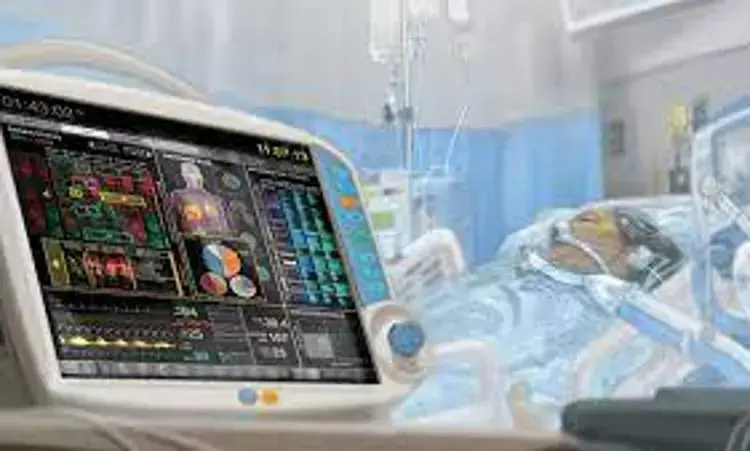- Home
- Medical news & Guidelines
- Anesthesiology
- Cardiology and CTVS
- Critical Care
- Dentistry
- Dermatology
- Diabetes and Endocrinology
- ENT
- Gastroenterology
- Medicine
- Nephrology
- Neurology
- Obstretics-Gynaecology
- Oncology
- Ophthalmology
- Orthopaedics
- Pediatrics-Neonatology
- Psychiatry
- Pulmonology
- Radiology
- Surgery
- Urology
- Laboratory Medicine
- Diet
- Nursing
- Paramedical
- Physiotherapy
- Health news
- Fact Check
- Bone Health Fact Check
- Brain Health Fact Check
- Cancer Related Fact Check
- Child Care Fact Check
- Dental and oral health fact check
- Diabetes and metabolic health fact check
- Diet and Nutrition Fact Check
- Eye and ENT Care Fact Check
- Fitness fact check
- Gut health fact check
- Heart health fact check
- Kidney health fact check
- Medical education fact check
- Men's health fact check
- Respiratory fact check
- Skin and hair care fact check
- Vaccine and Immunization fact check
- Women's health fact check
- AYUSH
- State News
- Andaman and Nicobar Islands
- Andhra Pradesh
- Arunachal Pradesh
- Assam
- Bihar
- Chandigarh
- Chattisgarh
- Dadra and Nagar Haveli
- Daman and Diu
- Delhi
- Goa
- Gujarat
- Haryana
- Himachal Pradesh
- Jammu & Kashmir
- Jharkhand
- Karnataka
- Kerala
- Ladakh
- Lakshadweep
- Madhya Pradesh
- Maharashtra
- Manipur
- Meghalaya
- Mizoram
- Nagaland
- Odisha
- Puducherry
- Punjab
- Rajasthan
- Sikkim
- Tamil Nadu
- Telangana
- Tripura
- Uttar Pradesh
- Uttrakhand
- West Bengal
- Medical Education
- Industry
Extended lung ultrasound protocol effective diagnostic tool in pulmonary consolidation

In the hands of experienced physicians, the extended lung ultrasound protocol can be a powerful diagnostic tool to determine the presence of pneumonia versus atelectasis in the general ICU population, according to a recent study published in the Critical Care Medicine
A study was conducted to determine the diagnostic accuracy of extended lung ultrasonographic assessment, including evaluation of dynamic air bronchograms and colour Doppler imaging to differentiate pneumonia and atelectasis in patients with consolidation on chest radiograph. Compare this approach to the Simplified Clinical Pulmonary Infection Score, Lung Ultrasound Clinical Pulmonary Infection Score, and the Bedside Lung Ultrasound in the Emergency protocol.
Adult patients that underwent a chest radiograph for any indication at any time during admission. Patients with acute respiratory distress syndrome, coronavirus disease 2019, severe thoracic trauma, and infectious isolation measures were excluded.
A lung ultrasound was performed within 24 hours of the chest radiograph. Consolidated tissue was assessed for the presence of dynamic air bronchograms and with colour Doppler imaging for the presence of flow. Clinical data were recorded after ultrasonographic assessment. The primary outcome was diagnostic accuracy of dynamic air bronchogram and colour Doppler imaging alone and within a decision, tree to differentiate pneumonia from atelectasis.
Results:
- Of 120 patients included, 51 were diagnosed with pneumonia.
- The dynamic air bronchogram had a 45% sensitivity and 99% doppler imaging had a 90% sensitivity and 68% specificity.
- The combined decision tree had an 86% sensitivity and 86% specificity.
- The Bedside Lung Ultrasound in Emergency protocol had a 100% sensitivity and 0% specificity, while the Simplified Clinical Pulmonary Infection Score and Lung Ultrasound Clinical Pulmonary Infection Score had a 41% sensitivity, 84% specificity and 68% sensitivity, 81% specificity, respectively.
Thus, in critically ill patients with pulmonary consolidation on chest radiograph, an extended lung ultrasound protocol is an accurate and directly bedside available tool to differentiate pneumonia from atelectasis. It outperforms standard lung ultrasound and clinical scores.
Reference:
Extended Lung Ultrasound to Differentiate Between Pneumonia and Atelectasis in Critically Ill Patients: A Diagnostic Accuracy Study by Haaksma, Mark E. et al. published in the Critical Care Medicine
doi: 10.1097/CCM.0000000000005303
Dr. Shravani Dali has completed her BDS from Pravara institute of medical sciences, loni. Following which she extensively worked in the healthcare sector for 2+ years. She has been actively involved in writing blogs in field of health and wellness. Currently she is pursuing her Masters of public health-health administration from Tata institute of social sciences. She can be contacted at editorial@medicaldialogues.in.
Dr Kamal Kant Kohli-MBBS, DTCD- a chest specialist with more than 30 years of practice and a flair for writing clinical articles, Dr Kamal Kant Kohli joined Medical Dialogues as a Chief Editor of Medical News. Besides writing articles, as an editor, he proofreads and verifies all the medical content published on Medical Dialogues including those coming from journals, studies,medical conferences,guidelines etc. Email: drkohli@medicaldialogues.in. Contact no. 011-43720751


